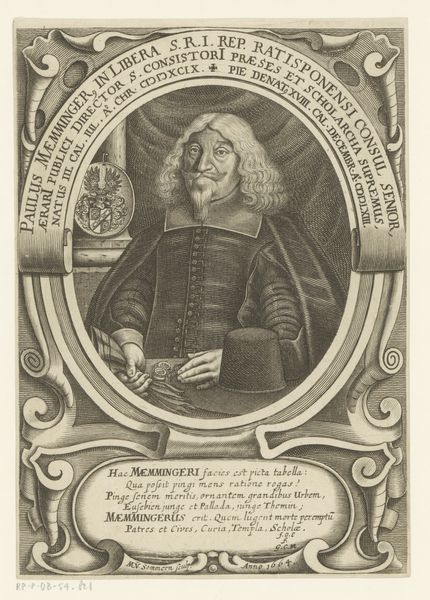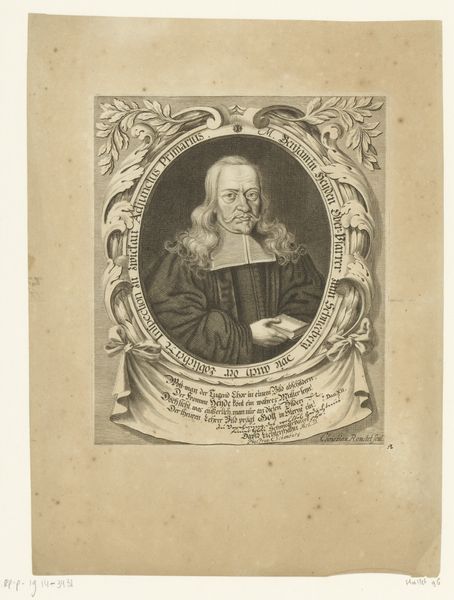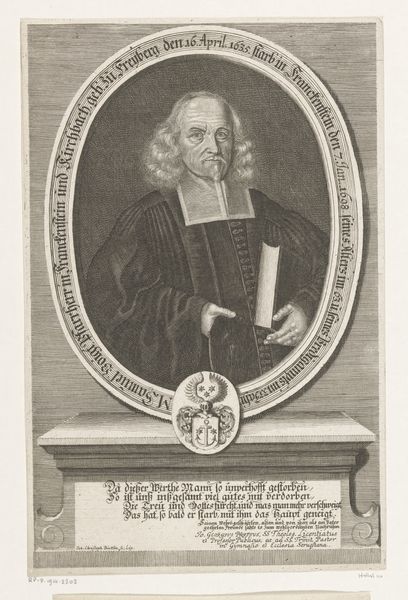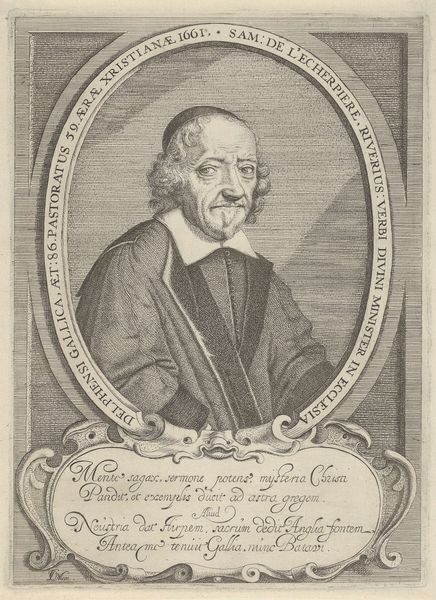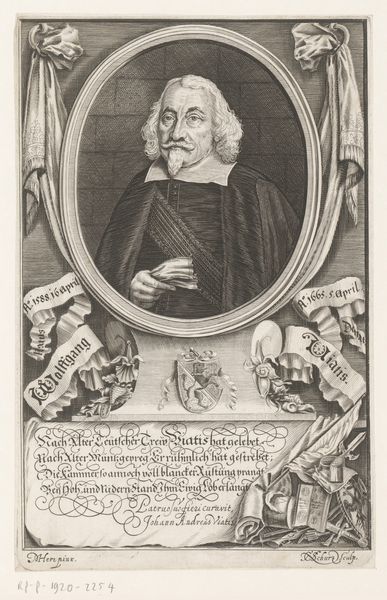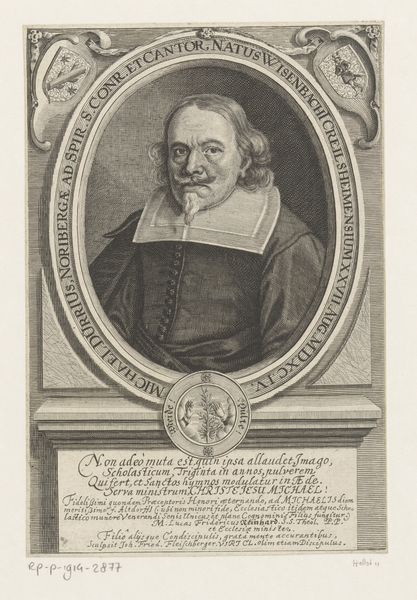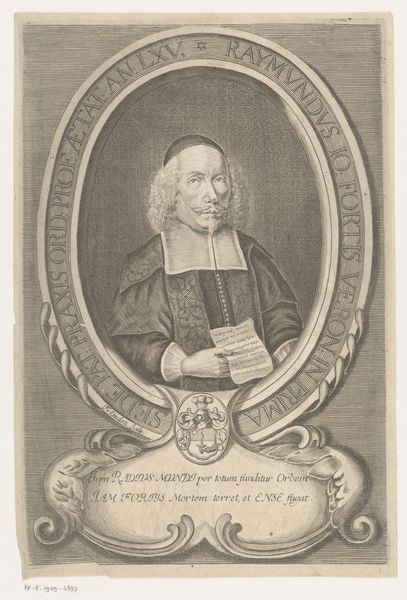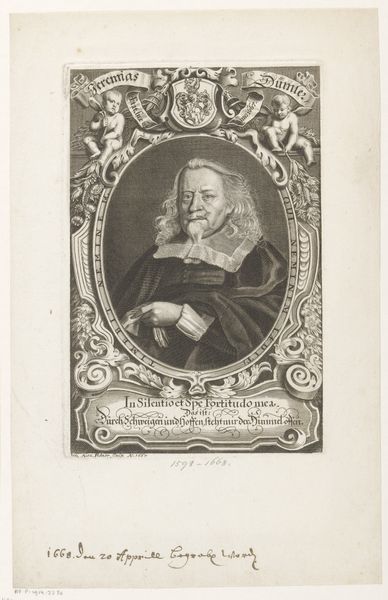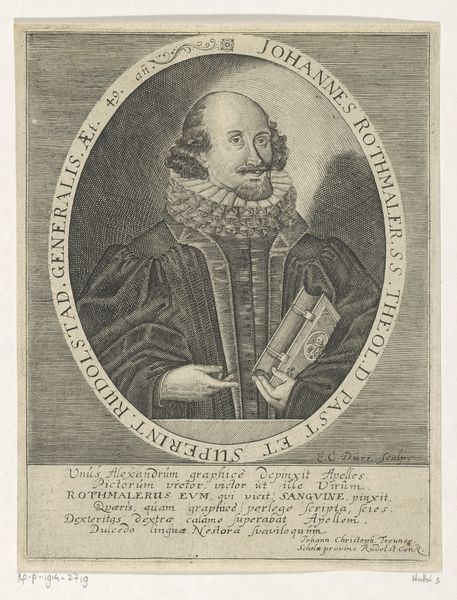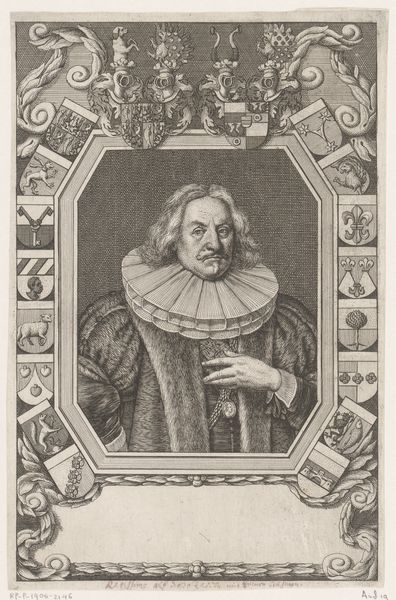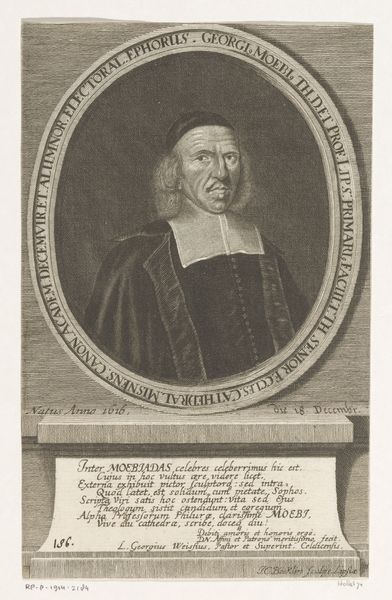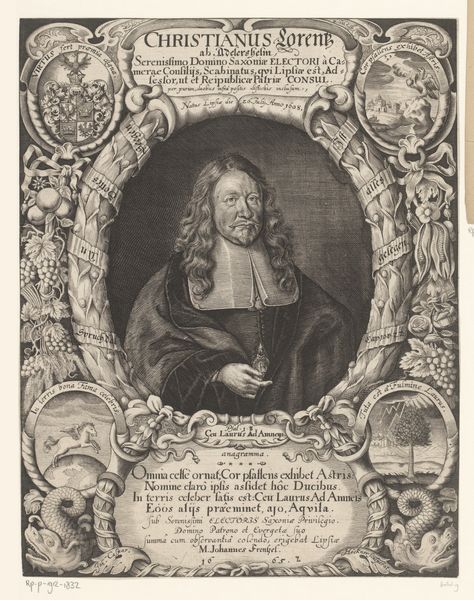
print, engraving
#
portrait
# print
#
history-painting
#
academic-art
#
engraving
Dimensions: height 195 mm, width 149 mm
Copyright: Rijks Museum: Open Domain
Editor: This is "Portret van Matthias Zimmermann," an engraving made sometime between 1670 and 1680 by Ernst Caspar Dürr. I find the composition really interesting with all the symbolic details surrounding the subject; what do you see in this piece? Curator: Beyond the skillful technique, I see a carefully constructed representation of power and intellectual authority rooted in a very specific time. Look at how Zimmermann is framed by symbols—heraldry, religious iconography. Dürr places Zimmermann within a visual language that speaks to the complex interplay of faith, family, and societal status during that era. What readings do you extract from it regarding representation of identity? Editor: I notice he’s holding what appears to be a book; and he’s in cleric attire so, scholarly religious authority I guess? And those landscape cameos at the top and sides - what could those signify? Curator: Those cameos are intriguing. Consider how landscape, during this period, often functioned as a symbol of territory and control. When we understand that landscapes could embody political claims, then we may be prompted to think through what Zimmermann controls within his context, as a member of the clergy but possibly also through ancestral estates. Can you read the frame and Zimmermann’s attitude and derive from it a positioning towards intellectual exchange, or societal challenge? Editor: That's a fascinating point. I was focusing on Zimmermann’s face—which seems carefully posed and serene—but I now notice how the landscape cameos act almost like claims or assertions. It pushes back against a simplistic understanding of portraiture as just likeness. I realize that this piece has more layers of complexity and intention regarding identity construction. Curator: Exactly. And considering that these prints were often disseminated widely, it leads us to reflect on the role of art in shaping and reinforcing social structures. Hopefully this unveils some understanding about that era, while also encouraging us to ask probing questions regarding the role of similar cultural narratives today.
Comments
No comments
Be the first to comment and join the conversation on the ultimate creative platform.
